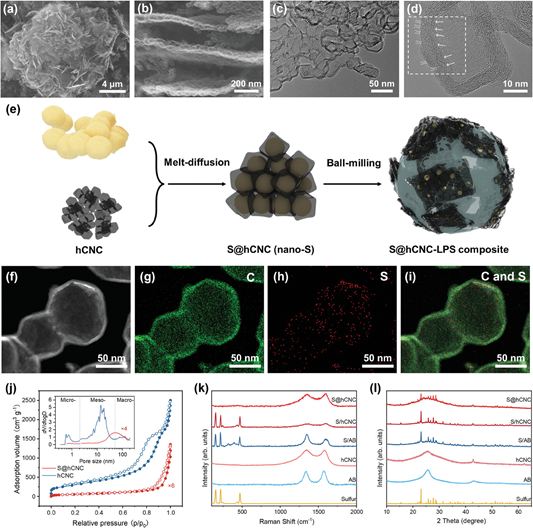Title: Engineering Triple-Phase Interfaces with Hierarchical Carbon Nanocages for High-Areal-Capacity All-Solid-State Li-S Batteries
Authors: Yu Luo, Siyuan Pan, JingYi Tian, Yali Liang, Haoyue Zhong, Ruqin Ma, Jiabao Gu, Yuqi Wu, Huiyan Zhang, Hongxin Lin, Weilin Huang, Yuxi Deng, Yu Su, Zhengliang Gong, Jianyu Huang, Zheng Hu, Yong Yang*
Abstract: All-solid-state lithium-sulfur batteries (ASSLSBs) have garnered widespread attention due to their advantages of high energy density and enhanced safety. However, the typical composite structure composed of solid-state electrolyte (SE), discrete conducting carbon black, and microsized sulfur (μ-S) with long-range Li+/e− conducting path and huge volume changes, suffers from sluggish charge transport and severe electrochemical-mechanical failure. In this work, a unique hierarchical carbon nanocage (hCNC) is applied as a continuous conducting network where nanosized sulfur are confined. Due to the synergistic effects of multi-dimensional (particle, interface, and electrode) structural engineering, this new sulfur-carbon composite cathode (S@hCNC39) can achieve uniform distribution of sulfur and carbon, and efficiently constructs triple-phase interfaces, showing enhanced charge-carrier transport and improved electrochemical-mechanical stability. Remarkable cycling performance of 89% after 300 cycles at 0.2 C at 30 °C is realized in ASSLSBs assembled with S@hCNC39. Notably, ASSLSBs achieve an ultrahigh areal capacity of 9.95 mAh cm−2 with stable cycling at 60 °C with high sulfur contents of 40% and high sulfur loadings of 6 mg cm−2. These results provide critical insights into the design of rational sulfur-carbon composites and offer a viable approach to enhance the overall performance of ASSLSBs.

Full-Link: https://onlinelibrary.wiley.com/doi/10.1002/adma.202413325